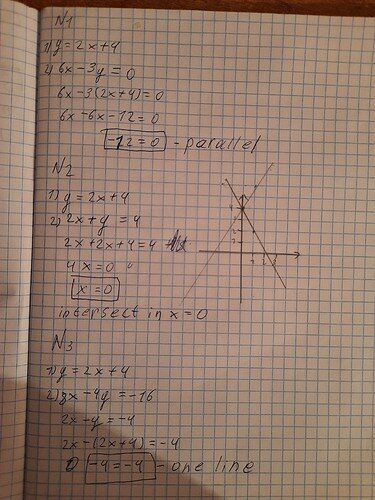My results are:
- 6x - 3y = 0
 ︎ parallel
︎ parallel - 2x + y = 4
 ︎ single point intersect
︎ single point intersect - 8x - 4y = -16
 ︎ on top
︎ on top
-
Equation
6x - 3(2x + 4) = 0
6x - 6x -12 = 0
-12 = 0 -
Equation
2x + 2x + 4 = 4
4x + 4 = 4
x + 1 = 1
x = 0
(I drew this one out. I am not sure the equation makes sense in this case. I can’t see how this result connects to the graph.) -
Equation
8x - 4(2x + 4) = -16
8x - 8x -16 = -16
-16 = -16



